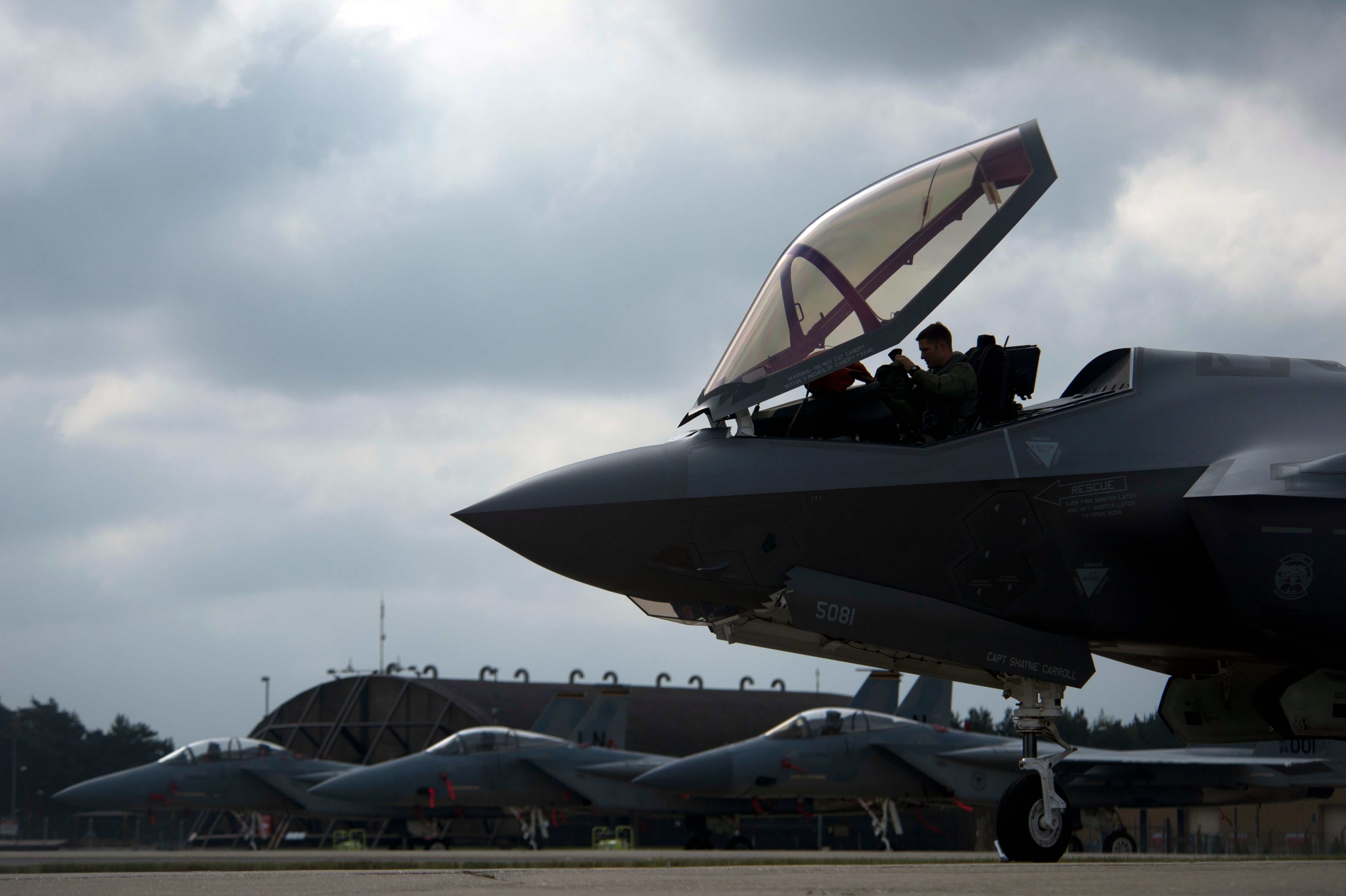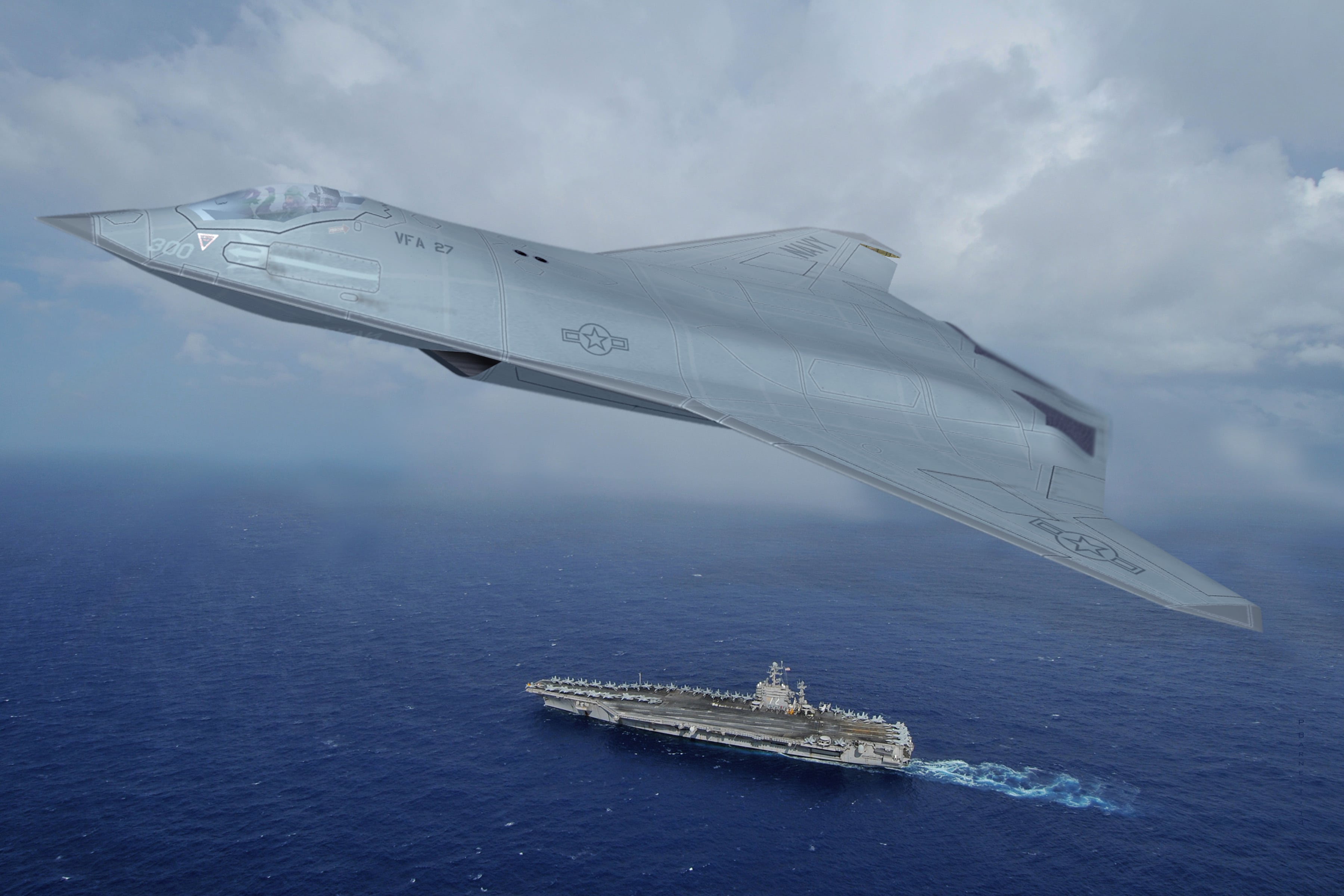WASHINGTON — Over two weeks in July, U.S. Air Force and Marine Corps F-35 joint strike fighters got the chance to fly simulated combat missions together during Red Flag 17-3, marking the first-ever time both the “A” and “B” models of the jet have been employed in the same training exercise.
Although the exercises were a new milestone in F-35 flight operations, the U.S. military has decades of practice operating stealth aircraft. That, former Air Force officials said on Wednesday, is a major reason why it will retain an edge against near-peer competitors like Russia and China, who are just now beginning to fly stealth fighters.
And it’s another reason why stealth technologies deserve continued investment and attention, they said.
“As we see Russia bring on stealth fighters and we see China bring on stealth fighters, we have 40 years of learning how to do this,” Mark Barrett, a retired Air Force two-star general, said during an event hosted by the Mitchell Institute for Aerospace Studies.
Those lessons weren’t always easy, and included the loss of an F-117 Nighthawk that was shot down in 1999 by the former nation of Yugoslavia. But during that time, the Air Force developed a deep understanding of “how to integrate non-stealth and stealth together in packages [and] how we can hide,” Barrett said.
Stealth, or low-observable technology, isn’t just one particular characteristic, Mace Carpenter, a retired Air Force colonel, and Barrett wrote in a report on the topic for the Mitchell Institute. Rather, it is the mix of many different techniques, from aircraft shape to special, low-observable coatings, that make it more difficult for an aircraft to be detected.
The Air Force has fielded three stealth fighters over its history — the F-117 Nighthawk, the F-22 Raptor and the F-35A — along with a handful of stealth bombers and unmanned aircraft and, probably, some airplanes that are still classified to this day.
The F-35 and F-22 won’t be the only stealth fighters in the skies for long. China announced initial operational capability on an indigenous stealth fighter, the J-20, earlier this year. Meanwhile, Russia is developing its first stealth aircraft, the Sukhoi T-50 PAK-FA, and the country has tested six prototypes so far.
While Russia and China had “gone to school” on the U.S. military’s stealth capabilities — China’s J-20 is widely thought to be built using stolen information from U.S. fifth-generation fighters — Barrett said neither country has the same level of know-how when it comes to using stealth in combat.
“I would still say that the 40 years of training, the 40 years of operation, the 40 years of integrating is really going to give us an advantage,” he said.
The most recent Red Flag exercise, which ran from July 10 to July 28 at Nellis Air Force Base, Nevada, provides some information about the operational experience that could set the United States apart from its near-peer competitors.
Although the F-35 and F-22 operators who spoke to reporters during a July 26 media panel were careful to not say too much about the tactics, techniques and procedures, or TTP, employed by the stealth aircraft, they highlighted the F-35’s ease of integration with other jets.
“What we found with the F-35 is it’s a very flexible platform,” said Lt. Col. Jon Snyder, commander of the 58th Fighter Squadron at Eglin Air Force Base, Florida. “We are able to do a lot of different mission sets, although our primary mission is the air-to-ground focus. We can do the air-to-air escort role, but the F-22 is specifically designed in order to dominate that arena.”
While Snyder and his squadron have conducted joint training with the Navy’s F-35C, since the service has a training unit located at Eglin, they have no experience with the “B” model, he said.
“On night one, [I] met my F-35B fellow flight lead, who was in for the mission-planning process, and we basically compared notes for, like, 2 seconds, and realized we were on the exact same page, operating off the exact same TTPs because the F-35 program, for the first time, has a joint TTP that’s agreed upon between all three services and variants,” he said. “It’s amazing, it was really cool to see that all come together.”
RELATED

Having stealthy fighters in the mix also increased the survivability of fourth-generation aircraft, which oftentimes can carry bigger weapons loads but have less sophisticated sensor suites, he said.
“What we find is they might not be low-observable technology or able to get as close to the threat as the fifth generation can, but by providing them good target location — providing them good threat awareness of what is out there on the battlefield allows them to operate a little bit more aggressively.”
That highly integrated experience of Red Flag was decades in the making. Barrett, a former F-22 pilot, described the difficulties the Air Force had when it began flying the Raptor.
“When we brought on the F-22 for the first time, we really didn’t understand how to operate a fifth-generation, low-observable airplane. We still flew in visual formation when we started flying,” he said.
“We didn’t know how to train with it. In the first month, everyone wanted to go fight the Raptor. After about two months, they realized it wasn’t much fun, they had better things to do and we started self-supporting each other. But the Raptor makes a really poor Red Air [adversarial aircraft] because even another Raptor doesn’t see another Raptor very well,” he said. “We had to evolve our way through this.”
The future of stealth
While the Air Force has long been a proponent of low-observable technology, it remains to be seen just how much of a priority stealth will be in designs for the service’s next fighter aircraft, called Penetrating Counter Air, or PCA
In an interview with Defense News last year, Brig. Gen. Alexus Grynkewich, who led the service’s Air Superiority 2030 enterprise capability collaboration team, said range would be a major priority for PCA, but also that the aircraft is envisioned as being an air-to-air powerhouse similar to the F-22.
RELATED

Barrett told Defense News that a tailless flying wing design might be a stealthy way to extend the endurance of a future PCA aircraft, especially if it can be paired with the F-22’s thrust vectoring technology, which aids maneuverability.
Meanwhile, adversaries are developing their own low-observable and counter-stealth capabilities. Barrett acknowledged that while competitor nations are investing in improved detection technologies, like new radar and signals intelligence systems, those innovations will make it tougher for all aircraft to avoid detection, and stealth aircraft will still maintain an advantage.
He also noted the unproven nature of China and Russia’s stealth fighter designs.
“There are a lot of stuff hanging outside of these airplanes,” he said. “It’s got to stay internal. How [do] they overcome all that? All the airplane pictures I’ve seen still have stuff hanging from the wings, and that just kills your stealth.”
Valerie Insinna is Defense News' air warfare reporter. She previously worked the Navy/congressional beats for Defense Daily, which followed almost three years as a staff writer for National Defense Magazine. Prior to that, she worked as an editorial assistant for the Tokyo Shimbun’s Washington bureau.






